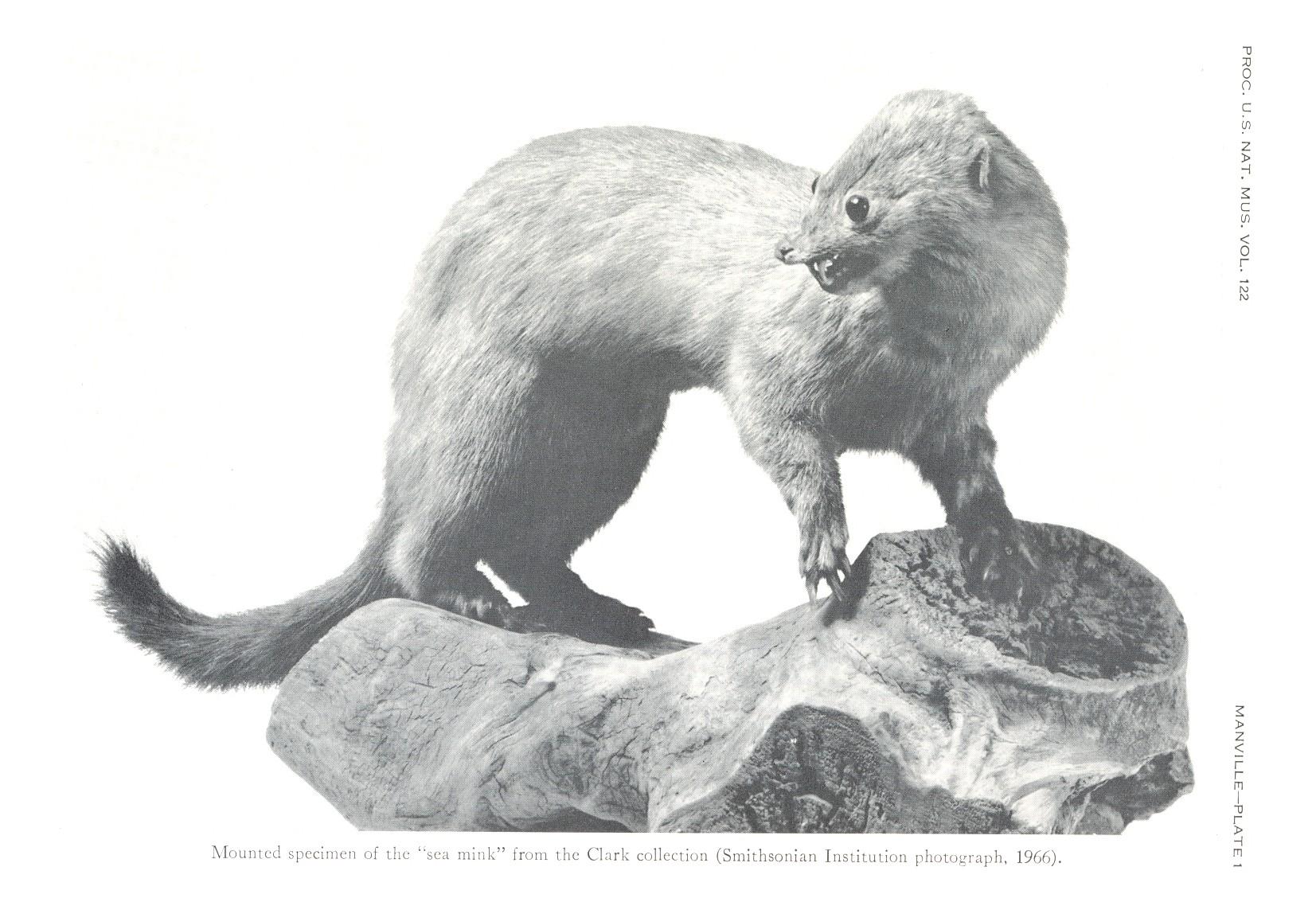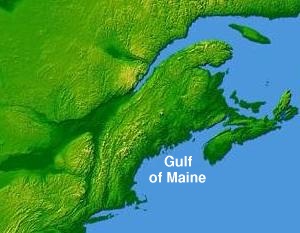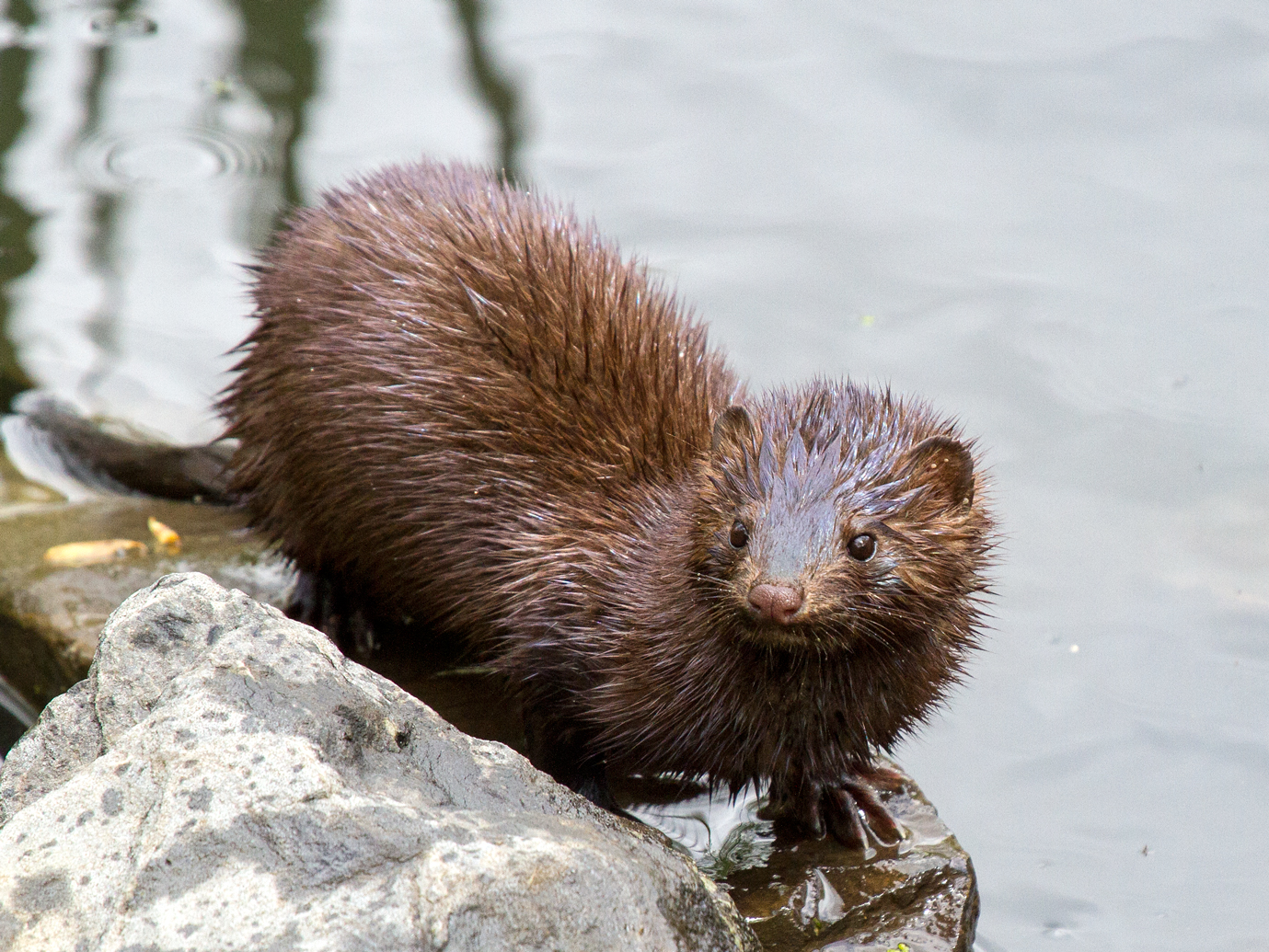Sea Mink
Order: Carnivora
Family: Mustelidae
Genus: Neogale
Species: N. macrodon
Extinction: 1860-1920
The Sea Mink is a recently extinct species of mink that lived on the eastern coast of North America. It was most closely related to the American Mink, with a still continuing debate on whether or not it should be considered a subspecies of the American Mink or a species of its own.
The Sea Mink was first described in 1903, after its extincion. Information regarding its appearance and behaviours stem from speculation and accounts made by fur traders and Native Americans.

The only putative skin of the extinct sea mink, Smithsonian Institute photograph, 1966
Range
Former range of the now extinct Sea Otter.

Gulf of Main (USA), cropped from a publication by NASA
Extinction
This species was pursued by fur traders due to its larger size, as this made it more desirable than other mink species further inland. The unregulated fur trade eventually led to its extinction, which is though to have occurred sometime between 1860 and 1920. The last two recorded Sea Mink kills were made in Maine in 1880 near Jonesport, and in 1894 on Campobello Island, New Brunswick.
Left: The Sea Mink's closest relative, the American Mink (Neogale Vison).

Behaviour
While not a true marine species, the Sea Mink was unusually aquatic compared to other members of Musteloidea, being-- next to otters--the most aquatic member of the taxon.
Use by Native Americans
Most Sea Mink remains, most of them skull fragments, have been recovered from Native American shell middens. Since many of these remains brain cases exhibit cut marks, it's assumed the mink was hunted for food, and possibly for exchange and ceremonial purposes.
